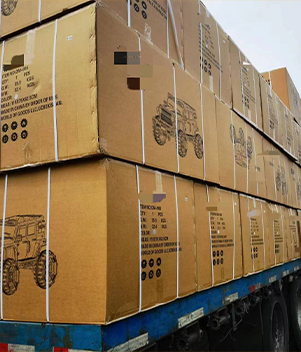mobility scooter on snow
Riding into Winter Exploring the Use of Mobility Scooters on Snow
As winter blankets the landscape in a layer of snow, many challenges arise for those who rely on mobility scooters for their transportation needs. With obstacles like icy sidewalks and snow-covered streets, navigating through wintry conditions can be daunting for mobility scooter users. However, innovative solutions and adaptations are making it possible for individuals to maintain their independence and mobility even during the colder months.
Understanding Mobility Scooters
Mobility scooters serve as crucial tools for individuals with limited mobility, providing them the ability to travel independently to appointments, social events, or just around their neighborhoods. These scooters vary in size, speed, and capability, catering to diverse user needs. While they perform admirably in fair weather conditions, the introduction of snow presents a unique set of challenges that users must overcome.
The Challenges of Snowy Conditions
One of the primary concerns for mobility scooter users in winter is traction. Standard mobility scooters, designed primarily for pavement and well-maintained surfaces, can struggle on snow and ice. Tires designed for smooth ground may not provide adequate grip on slippery surfaces, making it difficult for users to maintain control, stop safely, or even make it up hills. Additionally, depth of snow can become a significant barrier; even a few inches can be nearly impassable for many mobility scooters.
Another concern is visibility. Snow and winter weather can limit visibility, both for the user and for other pedestrians or drivers. This increases the risk of accidents, as those in mobility scooters may not be easily seen, especially if they are traveling on less-trafficked paths. Furthermore, snow and ice can cause curbs and other hazards to become obscured, leading to potential falls or collisions.
Adaptations and Solutions
mobility scooter on snow

Despite these challenges, several innovative solutions can enhance the winter mobility scooter experience. First, equipping scooters with winter tires designed for improved traction can substantially increase safety and functionality in snowy conditions. These tires, often featuring deeper treads and rubber compounds designed for colder temperatures, offer much better grip and handling on slick surfaces.
Additionally, scooter users can consider using accessories such as a snow shovel attachment or a snow plow kit. These tools can help clear pathways, ensuring a safer route for users. Many mobility scooter manufacturers also offer heated handles and seat covers, allowing greater comfort and warmth during cold outings.
For those who are particularly mobility-challenged, utilizing ride-sharing apps or community services can be a temporary solution. Many cities have introduced services that cater specifically to individuals using mobility devices, with specially equipped vans that can safely transport users even in winter conditions.
Public Awareness and Infrastructure
Another critical area of focus should be educating the public about the challenges faced by mobility scooter users during winter. Increased awareness can lead to more empathy and understanding, leading to supportive actions from drivers and pedestrians alike. Communities can also invest in maintaining clear, safe pathways for mobility scooter users. Regular snow removal from sidewalks and ramps can help ensure these routes remain accessible.
Moreover, local governments can work towards implementing better urban planning that considers the needs of all citizens, including those with mobility challenges. Creating a network of pathways that are consistently cleared and well-maintained can make a significant difference in the lives of scooter users during winter.
Conclusion
In summary, while mobility scooters can face significant challenges during snowy weather, a combination of innovative adaptations, community support, and improved awareness can enable users to retain their independence in winter months. By investing in better infrastructure, enhancing scooter technology, and fostering a culture of understanding, we can ensure that everyone has the opportunity to navigate their environments safely and efficiently, regardless of the season. Embracing these solutions will not only empower those with mobility challenges but will also create more inclusive communities where all individuals can thrive throughout the winter season.
-
Understanding Voltage in Battery for Children's Motorized CarNewsJun.05,2025
-
Safety Features to Look for in an Electric Car for KidsNewsJun.05,2025
-
How to Teach Your Child to Ride a Kids MotorcycleNewsJun.05,2025
-
How to Prevent Falls on a Balanced ScooterNewsJun.05,2025
-
How to Maintain Your 3 Wheeled Scooter for LongevityNewsJun.05,2025
-
Best Motorcycle Scooters for Urban CommutingNewsJun.05,2025
